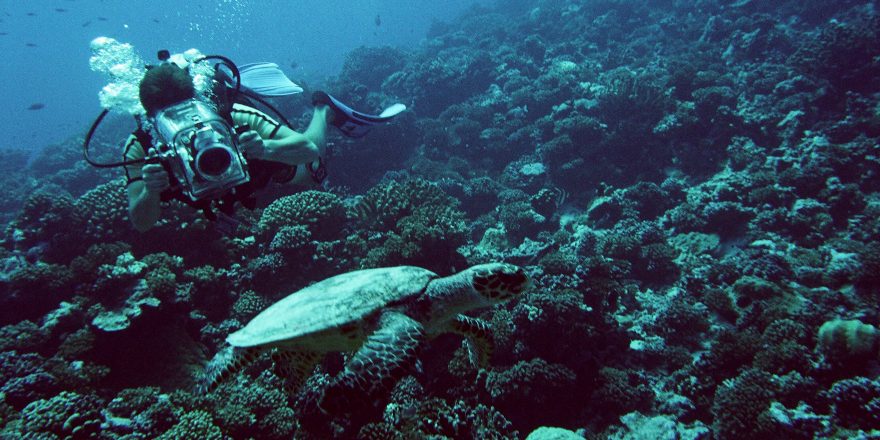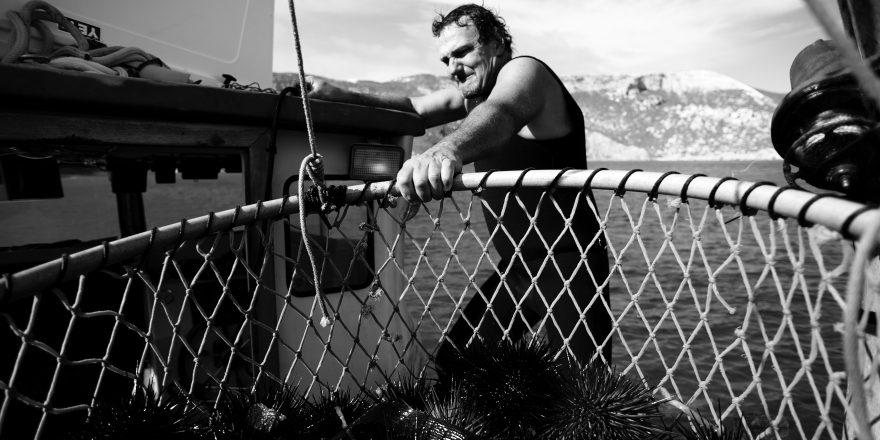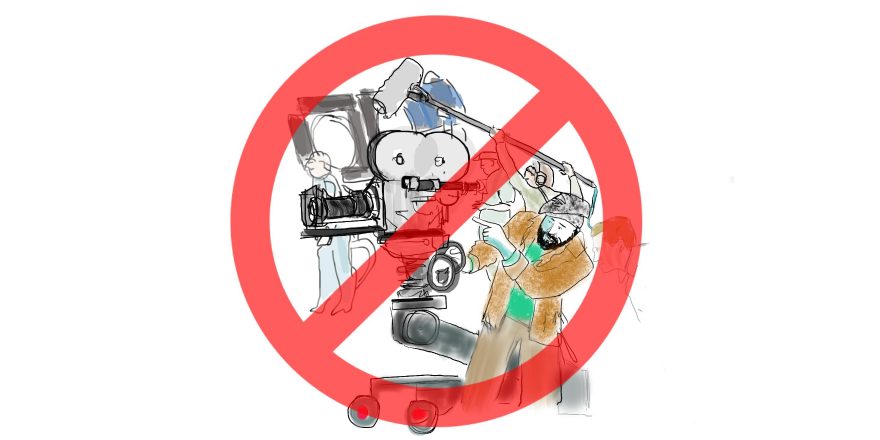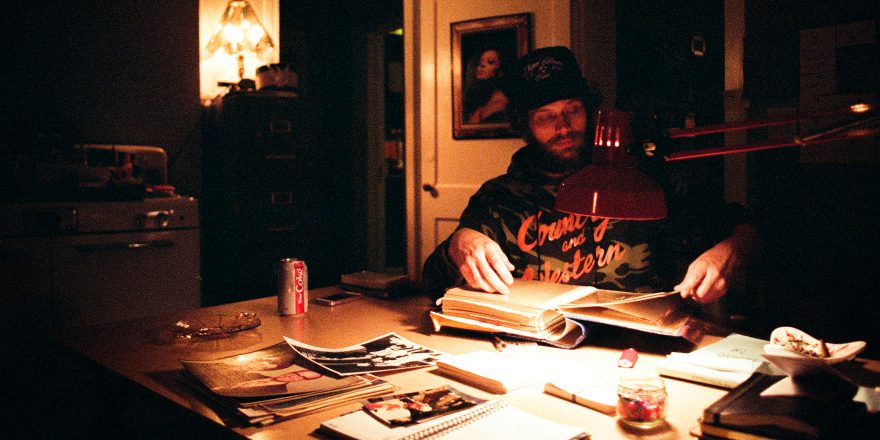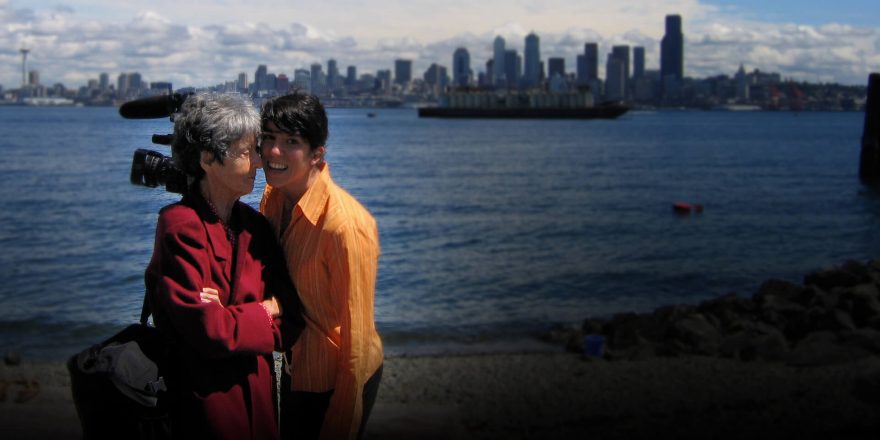Often when a major accident happens, whether it’s on land, in the air or underwater, it’s not because of one thing that goes wrong, but because of a cascade of mistakes or mishaps. That’s what happened to me when I nearly died making my new documentary about sea urchin divers, The Delicacy.
The sea urchin divers work off the coast of California by the Channel Islands between Santa Barbara and Ventura. They put on wetsuits, jump into the water, dive down amongst the kelp in extreme currents, and pick sea urchins off the bottom of the ocean. Kelp is like an untamed underwater forest. Ocean currents are like gusts of wind, sometimes incredibly strong.
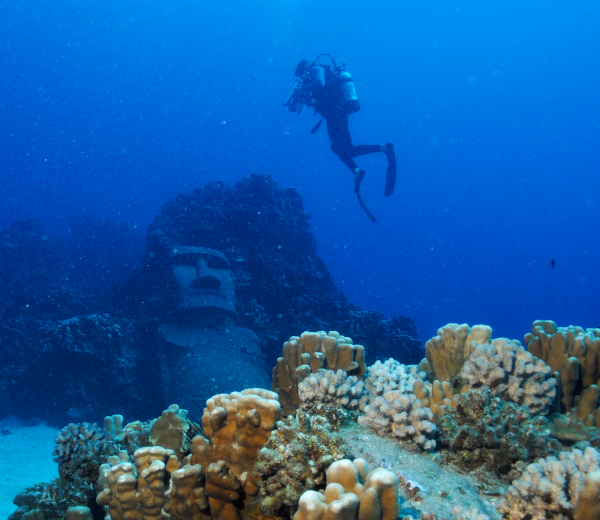
I began my career as an underwater photographer and dove in places like the Galapagos, French Polynesia, Easter Island, the Mediterranean and the Caribbean, and I had a fair amount of confidence in my diving ability when I started making The Delicacy. I had no fears about jumping into the churning water with the divers who do this on a regular basis. On this movie, that confidence almost me my life.
About halfway through the shoot, we tackled the most challenging dives, joining the sea urchin divers in their boats, which only fit two or three people. On the day in question, the entire crew was just me and my cinematographer, Jackson.
The cascade of mistakes started when the dive shop I rented gear from was out of the buoyancy compensators I wanted. Rather than the weight belt I was used to, I had to settle for weights that I had individually take out of my pockets, where they were strapped in with Velcro. We were also shooting The Delicacy on celluloid – which meant a much bigger, heavier camera – and I had never filmed with this camera underwater before. That was another problem.
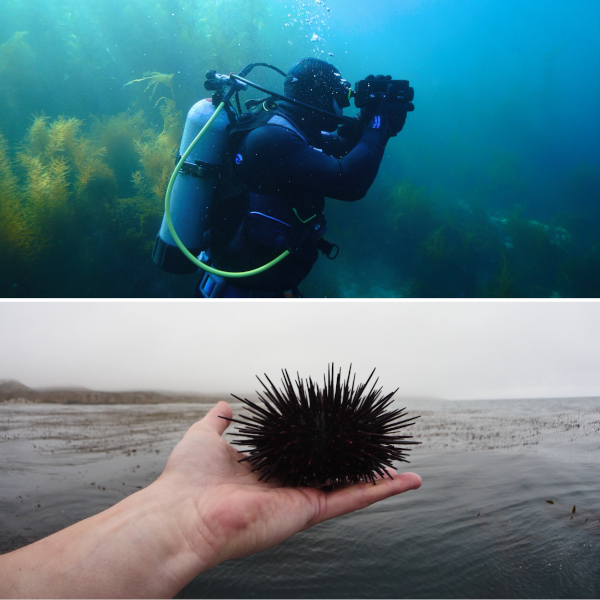
But as soon as we met up with the diver we were following that day, Jackson and I lost ourselves in filming our subject, the harbor, the sunrise. Instead of preparing for my own dive, I was fully focused on shooting. I wasn’t putting myself in the mental space of what I had to do underwater. And for some reason, although I’ve filmed sharks all over the world and am not afraid of them, all I could think about on this dive was sharks.
When the diver himself wanted to get underwater and go fishing for sea urchin, I rushed to put on my wetsuit. Another mistake. Never rush to get yourself in the water, because it’s so easy to miss a step. I immediately had another problem, though: I couldn’t get any neutral buoyancy, which you need when you’re diving in order to be suspended. Jackson handed me more weight, which made me slightly heavier than normal, and I went underwater.
It was a very choppy day, with two-and-a-half- or three-foot waves smashing into the boat, and the water was bitterly cold. As I began the dive, I noticed my depth gauge was leaking a tiny bit of air, which put me in the wrong mindset. I pushed everything aside, though, and alone, with no assistant cameraman, followed the diver through the kelp, deeper and deeper. When you get underneath the kelp forests, there’s almost no sunlight. It’s pitch black down there.
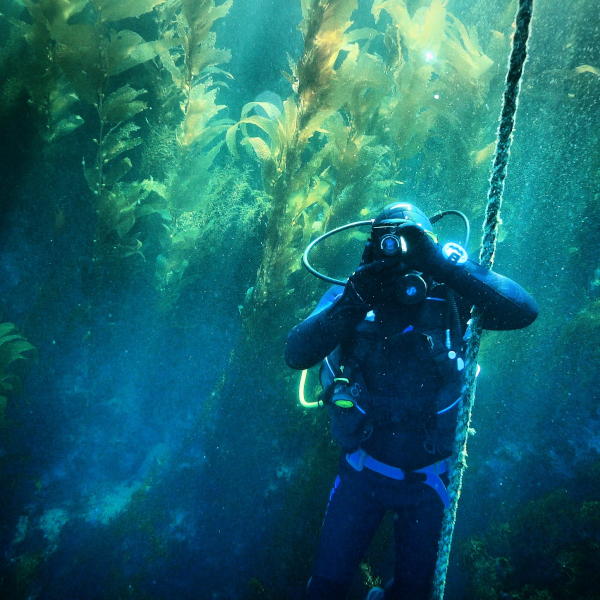
While I had an air tank, sea urchin divers breathe with a hookah system, which gives them air through a yellow hose several hundred feet long that’s connects back up to the boat. I figured if I followed that, I’d be fine. I had been underwater for about 45 minutes when I noticed my camera battery was going to die and I was running out of film, so I got my last shots and signaled to the diver that I was going to go back to surface.
“I’ll just follow his hose back,” I thought, as I swam through the kelp forest, trying to find the boat. I looked where the hookah hose went up to the surface. I swam up and made arguably one of the biggest mistakes of my life: I did not inflate my buoyancy compensator, which fills your vest with air and keeps you on the surface when you get to the top. I was distracted by my fear of a shark attack from below. It’s a very irrational fear, as encountering – let alone getting attacked by – a great white shark is astronomically rare. What I should’ve thought was, “Inflate your vest, get your bearings, see where the boat is.”
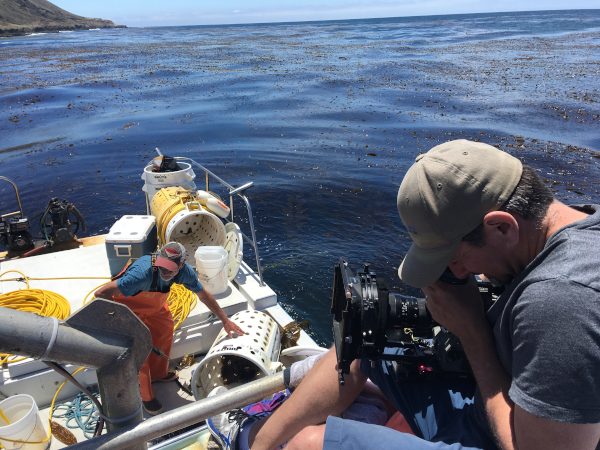
Unfortunately, it wasn’t as simple as just reaching the surface and finding open water. We were toward the end of the season, when the kelp is very long and bunched up in giant clumps on the surface. The kelp formed about a two-and-a-half-foot layer I had to fight through to reach the surface. When I did, I realized I’d emerged about 200 feet from the boat.
I couldn’t swim through the kelp, as it was incredibly dense, weighed hundreds of pounds and was all connected to the bottom of the ocean. The waves were now smashing into my face, and the currents were pulling me all over the place, and I was dragged back into the kelp before I could go back underwater to safely find the boat. The kelp entangled itself on my tank, my buoyancy compensator and my camera. I should’ve let that camera go, but I was trying to save the footage I’d just shot and the expensive camera I loved. The kelp ripped my regulator out of my mouth, meaning I could no longer breathe, as three-foot waves pulled me underwater, then pushed me up again. I was inhaling freezing cold saltwater.
I had a knife around my foot, but I couldn’t reach it; my arms were tangled up in the kelp. It was the first time diving that I’ve ever felt true panic. My body went into a fight-or-flight response. I was trying to swim up, but my arms were being pulled behind my back and the camera was now attached to me through hundreds of pounds of seaweed. I was getting pulled under, and coming back up, and choking, and I couldn’t breathe, and my regulator was gone. I was pushing with my legs as hard as I possibly could, but my vest was not filled with air, so all the weights in my pockets were pulling me underwater.
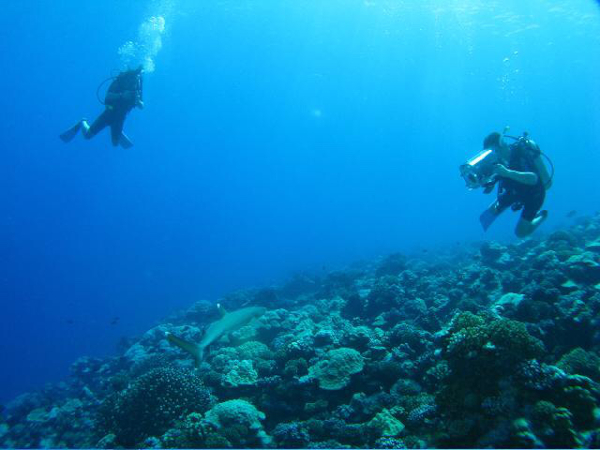
My second child had just been born, and all I could think about was how my new baby was going to lose his father because of a film about sea urchins. That seemed like an especially stupid reason to die.
Because of the generator on the boat, which is as deafening as a lawnmower, my cinematographer Jackson had no way of hearing me shout. He and I have been in 10 countries where we’ve filmed on boats, but I’d never thought to mention to him, “If you ever see a scuba diver on the top of the water waving, they’re in trouble.” When he did finally see me, I was waving to him – and he waved back. I started seeing black spots. That’s when I realized I was almost certainly going to die out there.
Luckily for me, that yellow nylon hose was sitting across the top of the kelp, attached to the generator. It’s not very strong, but I started pulling on it to try to get his attention. I had no regulator in my mouth. Waves were slapping me and I was going underwater and then I blacked out, but I had wrapped that yellow cord around my arm. When I came to, I could see Jackson about 100 feet away from me, trying desperately to pull the hose. I could see the nylon was turning white as it was getting stretched so thin because I was attached to so many hundreds of pounds of kelp.
Over the course of 25 minutes or so, Jackson was able to pull me close enough that I could hear him. He was yelling to me, “Are you OK?” and I was screaming to him, “No.” He was convinced he was pulling the diver on the other end of the hookah hose, but he wasn’t, I was just attached to so much kelp that it felt like I was five times my weight. If he let go for just a minute, I went 25 feet further back out to sea. I remember crying at the irony of being afraid of dying from a shark, and realizing I was going to die because of a plant.
Jackson kept pulling and I pushed with my feet and my arms, giving it all I had left. It took every ounce of strength he had to pull me up onto the boat. Back on board, I vomited ocean water everywhere. And I cried, and threw up again, and hugged him. It was the closest I’ve ever come to death. I was so shaken and emotionally and physically drained by what had happened, I just sat on the boat and shook for 25 minutes. I didn’t dive again for almost eight months. Part of the reason The Delicacy took six years to make is that when something like this happens, you need to take a break.
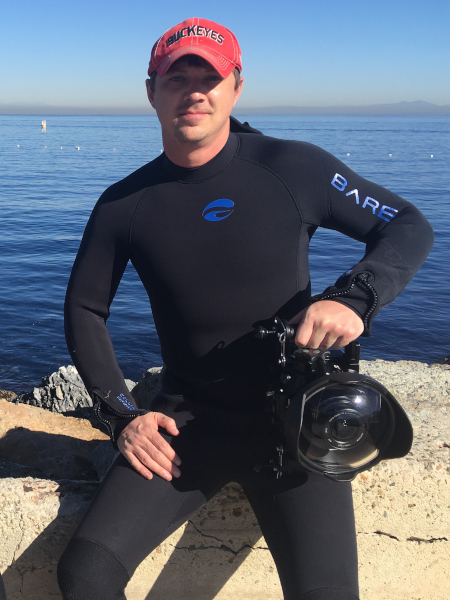
I’ve learned a couple things from my near-death experience. First, and most important, is that footage is never more important than your life. Returning to my family – my wife, and my two daughters, one so young she barely had a chance to get to know me – is the most important thing. Second, I learned how important it is for your collaborators on a film to understand what could possibly go wrong and what to do in those scenarios. I will never forget this experience filming The Delicacy. It’s something I’ll always carry with me, whether I’m attempting to dive again or I’m prepping for another shoot that holds potential danger. Like one of the main characters says in the film, “The ocean is always in control.” That is true, and I will never again ignore my instincts when they tell me to slow down and do things right.



